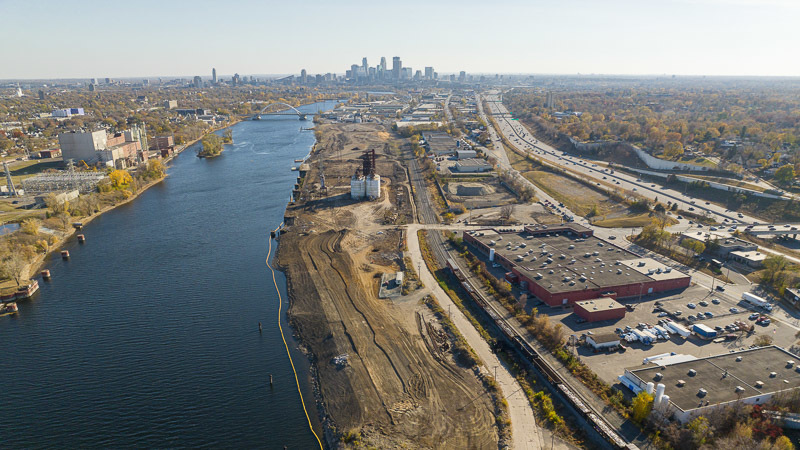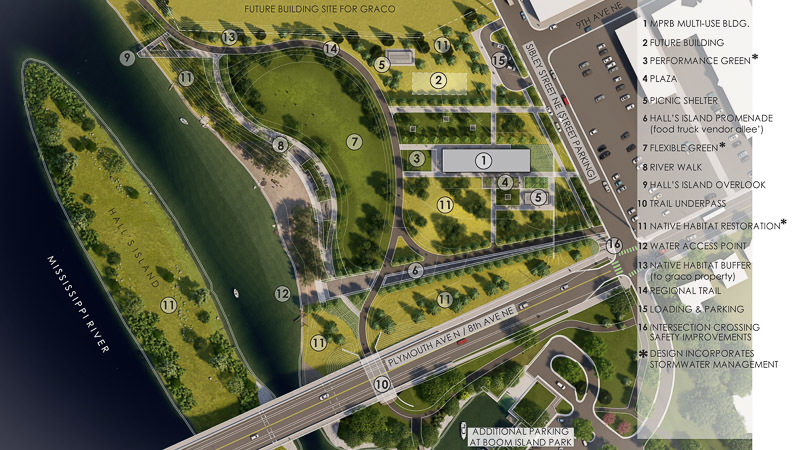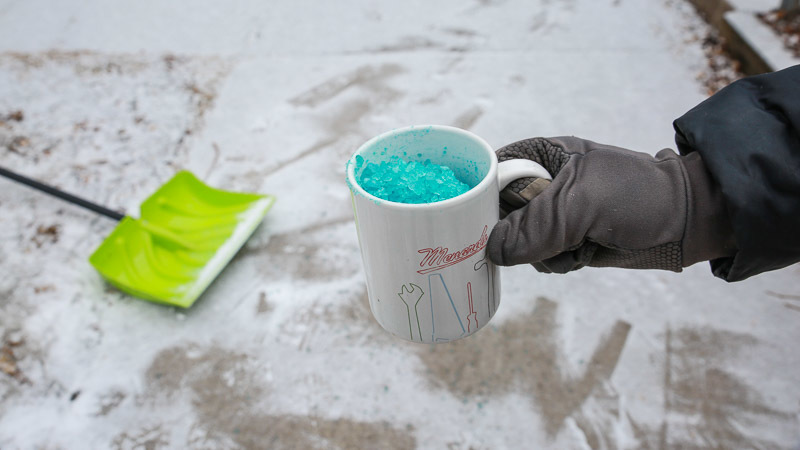|
NEWSLETTER / NOVEMBER 2022
Table of Contents
Community Open House for Upper Harbor Terminal Project on Dec. 13
MWMO Awards Grant for Green Infrastructure at Graco Park
The Myth of Environmentally Friendly Ice-Melt Products
Meet the Commissioners: Mike Lukes (St. Paul)
Upcoming Grant Application Deadlines
Community Open House for Upper Harbor Terminal Project on Dec. 13
 Wondering what’s next for the Upper Harbor Terminal redevelopment? You’re invited to an open house event on Tuesday, Dec. 13, from 4 p.m. to 6 p.m., at Glass House (directions). A brief presentation will be followed by an opportunity for visitors to meet with key project partners and ask questions.
MWMO staff will be on hand to discuss the riverbank and habitat restoration work underway at the Upper Harbor site, as well as future plans for large-scale green stormwater infrastructure. Staff from the City of Minneapolis, the Minneapolis Park and Recreation Board, United Properties, and other partners will be available to discuss other aspects of the project.
Crews have nearly finished regrading the shoreline at Upper Harbor Terminal and will soon be adding new topsoil and planting native vegetation on the north end of the site. You can check out what the site looks like now on our Flickr photo album.
Check out the event details and download a printable flyer.
MWMO Awards Grant for Green Infrastructure at Graco Park
 Image credit: Minneapolis Park and Recreation Board
Less than two miles downstream of Upper Harbor Terminal, construction has begun on another new riverfront park in Minneapolis.
Graco Park is scheduled to open in 2024. Located in Northeast Minneapolis between Boom Island and Hall’s Island, the park will feature a multi-use community building, gathering spaces and walkways, river access, and a rerouted and improved bike trail.
The MWMO awarded a $480,000 grant to the Minneapolis Park and Recreation Board (MPRB) to enhance development of the park by adding habitat restoration and stormwater management features, a low-maintenance pollinator lawn, and a heated sidewalk and plaza snowmelt system.
Five years ago, the MWMO partnered with MPRB to reconstruct the adjacent Hall’s Island. That project, together with Graco Park, Upper Harbor Terminal, Water Works, and the 26th Avenue Overlook is part of a long-term effort to improve the ecology and accessibility of the Minneapolis riverfront.
Read our news release.
The Myth of Environmentally Friendly Ice-Melt Products
 Never mind what it says on the label: There is no such thing as an environmentally friendly ice-melt product.
All salt and deicing chemicals are harmful to water quality, plants, wildlife, and infrastructure like sidewalks. You might not know this from browsing the available products at your local hardware store, where the label “environmentally friendly” is liberally applied to product packaging.
In reality, stopping the chronic over-use of salt and deicers is the only way to prevent further damage by these chemicals, which enter our rivers and lakes through stormsewers.
Here’s how you can help:
-
Shovel, sweep, and scrape snow away first. Throwing ice-melt product on top of snow won’t help anyone. (Here’s proof.)
-
Use less product. Aim for a 3-inch spread between granules. More product does not equal more melting.
-
Watch the temperature. Normal salt is only effective down to 15 degrees Fahrenheit. Other salts and chemicals have different temperature ranges. Read your product’s label carefully.
-
Use grit for traction. If it’s too cold for your ice-melt product to work, use traction grit or sand to make the ice less slippery.
Go in depth on our snow and ice removal page.
Meet the Commissioners: Mike Lukes (St. Paul)
 The MWMO recently welcomed Mike Lukes as our new commissioner representing St. Paul. The retired meteorologist and U.S. Navy veteran brings a wealth of scientific knowledge to his new post, which had been vacant since 2019.
Lukes saw many changes during the course of his career, both in the technology used to predict the weather as well as the impact of climate change on weather patterns over time. His time in the Navy took him to some of the farthest reaches of the world, after which he worked for the National Weather Service as an upper-air test manager and as a service hydrologist.
The MWMO watershed’s boundaries include only a tiny sliver of St. Paul — 0.34 square miles, to be precise. However, that sliver contains the watershed’s only wetlands: the small but habitat-rich Kasota Ponds.
Read his full profile on our blog.
Upcoming Grant Application Deadlines
|